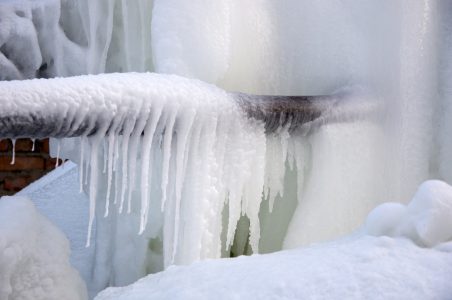How to Avoid Frozen Plumbing in Cold Weather: Expert Advice
How to Avoid Frozen Plumbing in Cold Weather: Expert Advice
Blog Article
We have found this article on 6 Ways to Prevent Frozen Pipes directly below on the internet and thought it made sense to write about it with you in this article.

Cold weather can ruin your pipes, specifically by freezing pipes. Here's just how to prevent it from occurring and what to do if it does.
Intro
As temperatures drop, the risk of icy pipelines increases, possibly bring about costly repairs and water damages. Understanding exactly how to prevent icy pipelines is important for homeowners in chilly climates.
Comprehending Icy Pipes
What triggers pipelines to ice up?
Pipes ice up when revealed to temperatures listed below 32 ° F (0 ° C) for prolonged periods. As water inside the pipes ices up, it broadens, taxing the pipeline wall surfaces and possibly creating them to burst.
Threats and problems
Frozen pipes can cause water disruptions, residential property damages, and pricey fixings. Ruptured pipelines can flood homes and cause considerable architectural damage.
Signs of Frozen Piping
Determining frozen pipelines early can avoid them from bursting.
Exactly how to identify icy pipes
Look for decreased water flow from taps, uncommon odors or noises from pipes, and noticeable frost on exposed pipes.
Avoidance Tips
Insulating at risk pipes
Cover pipes in insulation sleeves or utilize warmth tape to safeguard them from freezing temperature levels. Concentrate on pipes in unheated or outside locations of the home.
Heating methods
Maintain indoor rooms effectively warmed, especially areas with plumbing. Open cupboard doors to enable cozy air to flow around pipelines under sinks.
Shielding Exterior Pipes
Yard tubes and exterior taps
Separate and drain pipes garden hose pipes before winter season. Install frost-proof faucets or cover exterior taps with protected caps.
What to Do If Your Pipelines Freeze
Immediate activities to take
If you presume frozen pipes, maintain faucets open up to ease pressure as the ice melts. Make use of a hairdryer or towels soaked in warm water to thaw pipelines slowly.
Long-Term Solutions
Structural changes
Consider rerouting pipelines far from outside wall surfaces or unheated areas. Include extra insulation to attic rooms, basements, and crawl spaces.
Updating insulation
Invest in high-grade insulation for pipelines, attics, and walls. Correct insulation helps keep regular temperature levels and lowers the danger of frozen pipelines.
Verdict
Preventing icy pipelines requires aggressive measures and quick actions. By comprehending the reasons, indications, and preventive measures, house owners can shield their pipes throughout winter.
5 Ways to Prevent Frozen Pipes
Drain Outdoor Faucets and Disconnect Hoses
First, close the shut-off valve that controls the flow of water in the pipe to your outdoor faucet. Then, head outside to disconnect and drain your hose and open the outdoor faucet to allow the water to completely drain out of the line. Turn off the faucet when done. Finally, head back to the shut-off valve and drain the remaining water inside the pipe into a bucket or container. Additionally, if you have a home irrigation system, you should consider hiring an expert to clear the system of water each year.
Insulate Pipes
One of the best and most cost-effective methods for preventing frozen water pipes is to wrap your pipes with insulation. This is especially important for areas in your home that aren’t exposed to heat, such as an attic. We suggest using foam sleeves, which can typically be found at your local hardware store.
Keep Heat Running at 65
Your pipes are located inside your walls, and the temperature there is much colder than the rest of the house. To prevent your pipes from freezing, The Insurance Information Institute suggests that you keep your home heated to at least 65 degrees, even when traveling. You may want to invest in smart devices that can keep an eye on the temperature in your home while you’re away.
Leave Water Dripping
Moving water — even a small trickle — can prevent ice from forming inside your pipes. When freezing temps are imminent, start a drip of water from all faucets that serve exposed pipes. Leaving a few faucets running will also help relieve pressure inside the pipes and help prevent a rupture if the water inside freezes.
Open Cupboard Doors
Warm your kitchen and bathroom pipes by opening cupboards and vanities. You should also leave your interior doors ajar to help warm air circulate evenly throughout your home.

I'm very interested in How to prepare your home plumbing for winter weather and I hope you appreciated our article. In case you enjoyed reading our post kindly consider to share it. Many thanks for going through it.
Click Here Report this page